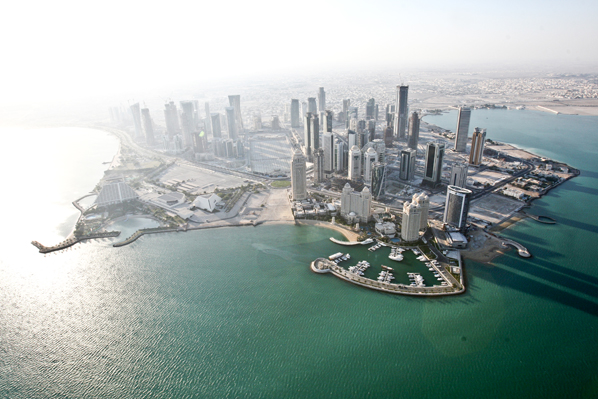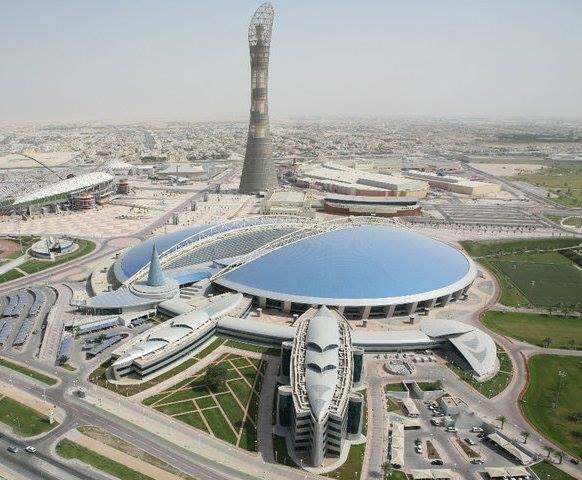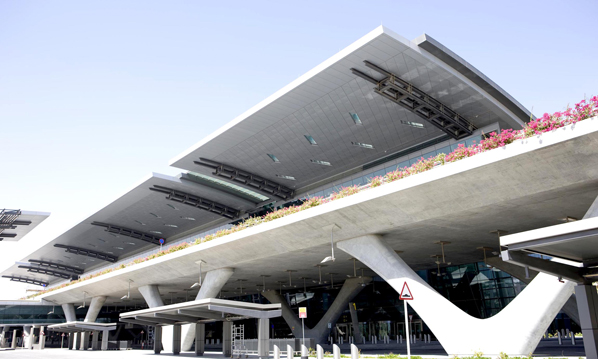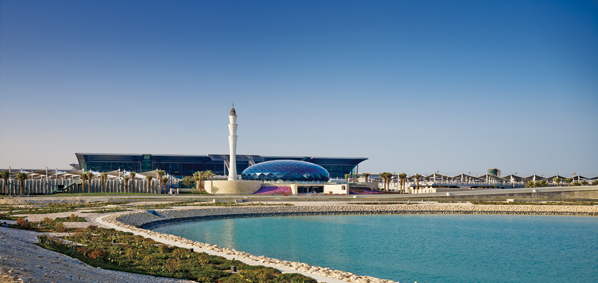Qatar reveals record visitor numbers as tourism surges

Qatar Tourism Authority has released figures today showing that the tourism industry in Qatar continues its strong performance.
The data were released in QTA’s first half 2014 report, covering the period from January to June and comparing performance to the same period 2013.
All key indicators of the tourism sector demonstrated improvement and growth, with capital Doha setting the trend.
“This report demonstrates Qatar’s progress toward becoming a developed and sustainable tourism destination,” said Hassan Al Ibrahim, chief tourism development officer at QTA.
“Confidence in Qatar’s tourism sector remains buoyant and our efforts continue to bear fruit in terms of promoting and developing the sector.
The launch in February of the Qatar National Tourism Sector Strategy 2030 provides a clear framework to all sector stakeholders for how we will contribute to moving our country towards a prosperous future and one that is less dependent on oil and gas resources.”
This success has already been noted by the global tourism community, with World Travel Awards anointing Qatar the World’s Leading Business Travel Destination in 2013.
Figures from the mid-year report back up the story of growth and development in the sector.
Total visitor arrivals to Qatar grew by eight per cent in the first half of 2014 reaching 1.42 million.
More than half a million GCC nationals, 536,264, visited Qatar, representing 38 per cent of tourists.
“This healthy growth demonstrates Qatar’s transformation into one of GCC top business, family, and leisure destinations” added, Al Ibrahim.
“We have to look beyond mere numbers and make a strategic shift towards quality tourism.
“This will emphasise hospitality, high standards of service, innovative developments and attractions grounded in Qatari culture and tradition.”
Breaking Travel News caught up with Qatar Tourism Authority chairman Issa Mohammed Al Mohannadi earlier this year
A number of industry leaders have emerged in Qatar in recent years, including Katara Hospitality which was recognised as the World’s Leading Hospitality Company by the World Travel Awards in 2013.
At the same time St Regis Doha took the title of World’s Leading Business Hotel at the World Travel Awards, while W Doha Hotel & Residences was recognised as the World’s Leading Hotel Residences.
La Cigale, which last year hosted the World Travel Awards Grand Final, has also been recognised with the World’s Excellence In Service Award.

Qatar is also preparing to host the FIFA World Cup in 2022
Qatari Visas
In the past, QTA has counted Business Visas and Tourist Visas exclusively, along with the entries of all GCC Nationals, for the reporting of visitor statistics.
Based upon a thorough review, in collaboration with the Ministry of Interior, the Ministry of Development Planning and Statistics, the United Nations World Tourism Organisation and Oxford Economics, a leading developer of global tourism statistical systems, QTA has adopted a revised and more accurate reporting methodology.
The figures now incorporate all visit visa types issued by the Ministry of Interior (a total of 14), which more accurately reflects the scale of Qatar’s visitor numbers.
Moving forward, all reporting will take into account the expanded range of visas, in line with international standards.
Qatar recognises the economic importance of tourism, and one of QTA’s goals is to provide the industry, investors and hotel developments with accurate information and market data, including well-defined visitor, economic and market statistics.
The updated reporting systems reflect the ongoing development of Qatar’s Tourism Satellite Account, a standard statistical framework and the main tool for the economic measurement of tourism globally.
The development of Qatar’s TSA is being overseen by an intergovernmental committee, led by the Ministry of Development Planning and Statistics with representation from the Ministry of Business and Trade, the Ministry of Finance, the Ministry of Interior, and the Qatar Tourism Authority.
“This expanded analysis of Qatar’s visitor markets presents an impressive picture of the size, diversity, and rapid growth of tourism, even in these early days of developing the sector,” stated Adam Sacks, president of the Tourism Economics group within Oxford Economics.
In the first half of 2014, the average hotel occupancy rate rose to 74 per cent from 67 per cent last year, assisted by a 1.9 per cent decrease in available rooms due to renovation-related closures.
Total revenue at four- and five-star hotels increased by four per cent, reaching QR1.98 billion, while total revenue at three-star hotels reached QR82.51 million in a growing area of the hotel market.
Average Room Rate was estimated at QR721 for five-star hotels, QR389 for four-star hotels, QR277 for three-star hotels, QR273 for two-star hotels, and QR212 for one-star hotels.
ARR softened in five-star hotels, in particular, relative to prior-year levels (QR814), which were high in comparison to regional benchmarks.
However, Revenue per Available Room increased by 8.5 per cent to QR544 across five-star hotels and by 4.5 per cent to QR455 across both four- and five-star hotels.
A diverse range of events and activities in Qatar, along with increased regional and international presence during the first half of 2014, contributed to growth in the leisure tourism sector.

Success Story
The first half of 2014 was marked by a number of achievements for Qatari tourism, including the launch of the second phase of the QTA’s cooperation agreement with the UNWTO.
The deal is aimed at assessing the current statistical systems, building capacities on both a local and regional level, providing internships for QTA staff, technical support for QTA departments, a tourism sector human capital development strategy, and a visa facilitation study
In February, 24 hotel establishments from the tourism industry in Qatar signed a commitment to the Global Code of Ethics for Tourism.
The private sector in Qatar is one of the first in the region to sign the code, with support from the government and private sector
QTA also recently announced the new Tourist Dhow Licensing procedures and standards in cooperation with the Ministry of Economy, Ministry of Interior, and Department of Public Transport Affairs.
Moreover, the successful application of the latest technology has seen visitors flock to both the Virtual Doha and Virtual Qatar websites to discover the destination before they travel.
The sites represent the best way to explore the destination and provide an invaluable guide while visiting.
Hamad International Airport
Earlier this year Qatar also welcomed the new Hamad International Airport.
Designed to support and sustain Qatar’s historic development as a nation, HIA promises an exponential increase in Qatar’s capacity to handle international movements of people, goods, capital, knowledge and technology.
It is a vital element of Qatar’s National Vision 2030, which sets out the roadmap for a unique national transition from reliance on petrochemical revenues to a diverse, knowledge-based economy.
Following a rigorous two-year planning phase, construction began in 2005 with an ambitious project to reclaim 62 million cubic meters of land from the Arabian Gulf.
Upon completion, HIA will occupy 29 square kilometres or a space equivalent to one third the total size of Doha.

Airport City, a planned free trade zone surrounding and supporting HIA, will occupy an additional ten square kilometres.
In one of the Gulf’s most successful projects to date, eight million cubic tonnes of household and commercial waste were removed during construction.
In fact, HIA is the only greenfield airport of this scale built anywhere in the world.
The Passenger Terminal Complex sits at the heart of HIA and is instantly recognisable as a new landmark structure in the world of aviation.

Covering 600,000 square meters and elevating to the height of four stories, HIA Passenger Terminal Complex equals 75 FIFA-sized football pitches or it can fit three Qatar National Convention Centres.
Uncompromised functionality paired with functional beauty were key drivers of the magnificent architecture that today houses a state-of-the-art airport, setting new standards in the aviation industry, airport architecture and design quality.
A workforce of 23,000 invested over 160 million hours to design and build an undulating structure resembling the gentle waves of the Arabian Gulf taking passengers gracefully from landside to airside, using building materials sourced from 40 different countries around the world.
Ensuring all aircraft land and take-off safely, HIA’s state-of-the-art air navigation, radar and communication equipment is housed in its magnificent, crescent-shaped air traffic control tower which sits between two parallel runways.
It will provide visitors with an unmistakeable welcome to Qatar and the Middle East, soaring 90 meters above the airport to complement Doha’s rapidly evolving skyline.

